
Thanks, Jim!
It almost ALWAYS looks like that in Mato Grosso in September.
The wet season, often doesn't kick in until October, with it continuing rainy into March.
https://en.wikipedia.org/wiki/Mato_Grosso


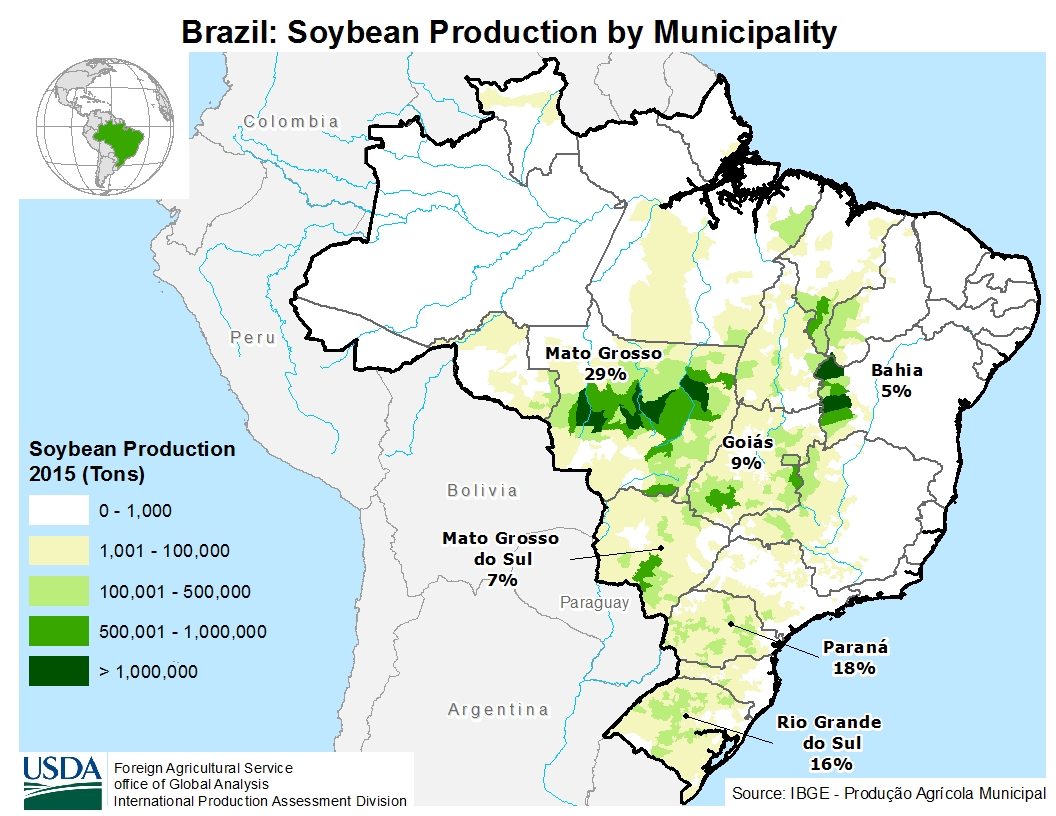
The maps below are for the past 30 days, 90 days and 180 days % of average precipitation.
Soybean country of Brazil has been dry!!!
https://www.cpc.ncep.noaa.gov/products/Precip_Monitoring/Figures/global/n.30day.figb.gif
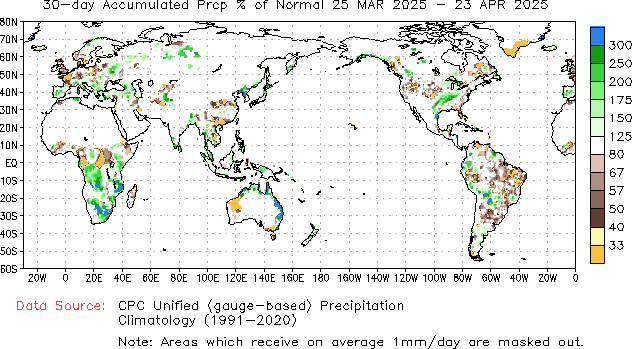
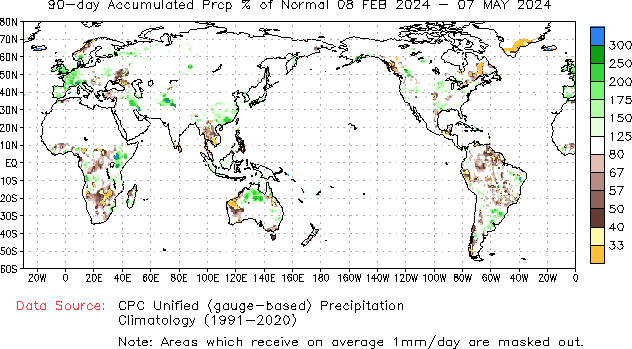
If not for the huge increase in CO2 the past 100 years, crop conditions in areas of natural droughts would have deteriorated much more. Increased CO2, besides acting as atmospheric fertilizer also causes plants to be more water efficient. They don't need to open their stomata as wide or as often to let CO2 in. As a result, they lose less water/moisture from evapotranspiration.
Soybeans are a C3 plant. C3 plants benefit the most from the increase in CO2.
The preceding discussion has presented the average effects of elevated CO2, but obscures important patterns of difference in response among plant species. One of the most important determinants of species differences in response to elevated CO2 is photosynthetic type. Most plant species (~90%) utilize a photosynthetic process known as C3 photosynthesis. Other species use either of two physiologically distinct processes known as C4 and CAM photosynthesis (Figure 2). C4 plants include most tropical and sub-tropical grasses and several important crops, including maize (corn), sugar cane, sorghum, and the millets. There has therefore been considerably more research on the responses to elevated CO2 in C4 than in CAM plants.
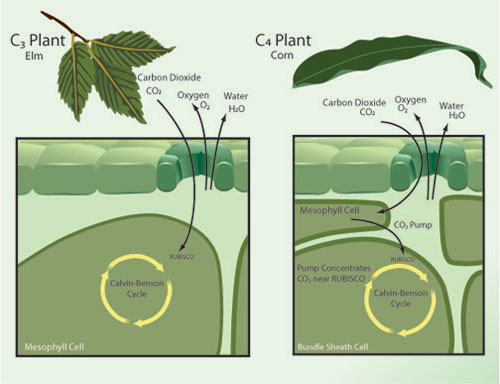
Figure 2: Each plant species utilizes one of several distinct physiological variants of photosynthesis mechanisms, including the variants known as C3 and C4 photosynthesis.
"Current evidence suggests that the concentrations of atmospheric CO2 predicted for the year 2100 will have major implications for plant physiology and growth. Under elevated CO2 most plant species show higher rates of photosynthesis, increased growth, decreased water use and lowered tissue concentrations of nitrogen and protein. Rising CO2 over the next century is likely to affect both agricultural production and food quality. The effects of elevated CO2 are not uniform; some species, particularly those that utilize the C4 variant of photosynthesis, show less of a response to elevated CO2 than do other types of plants. Rising CO2 is therefore likely to have complex effects on the growth and composition of natural plant communities
++++++++++
Soybeans are a C4 crop. Elevated C4 help them to do BETTER in a drought but they still need SOME rain!
Now, the most important element.......the weather forecast!
Last 6z GEFS. No rainy season monsoon yet thru 2 weeks for Central Brazil:
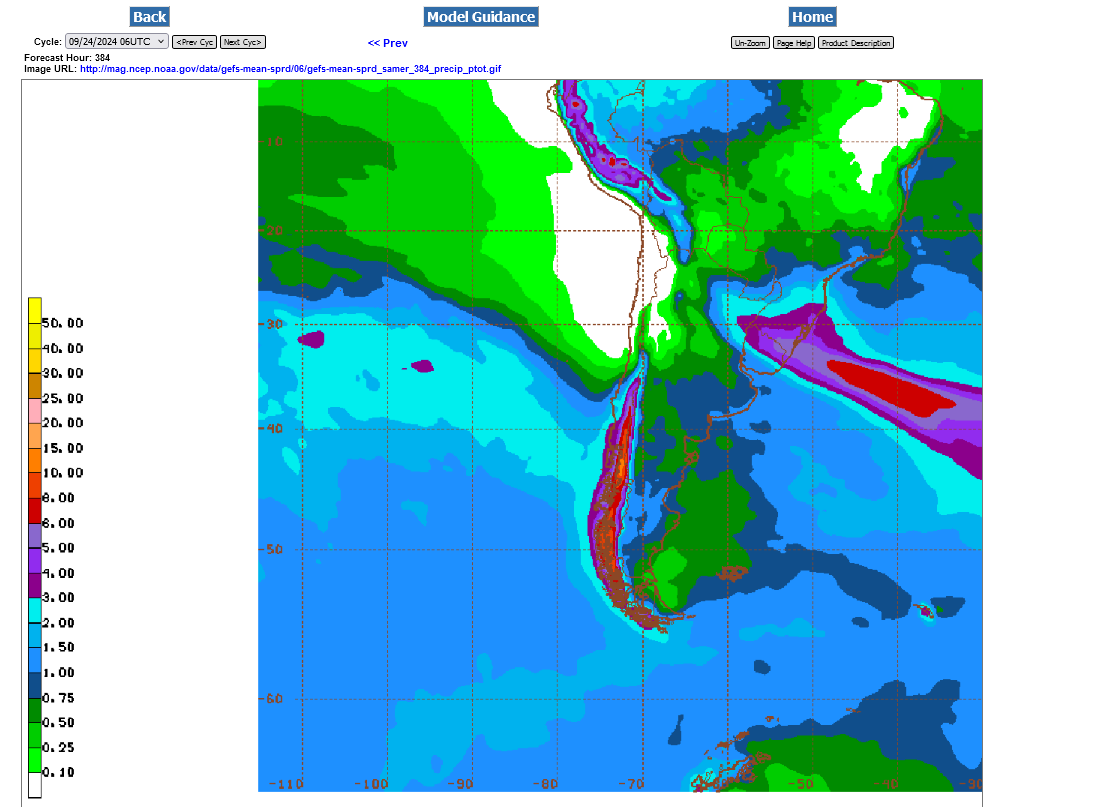
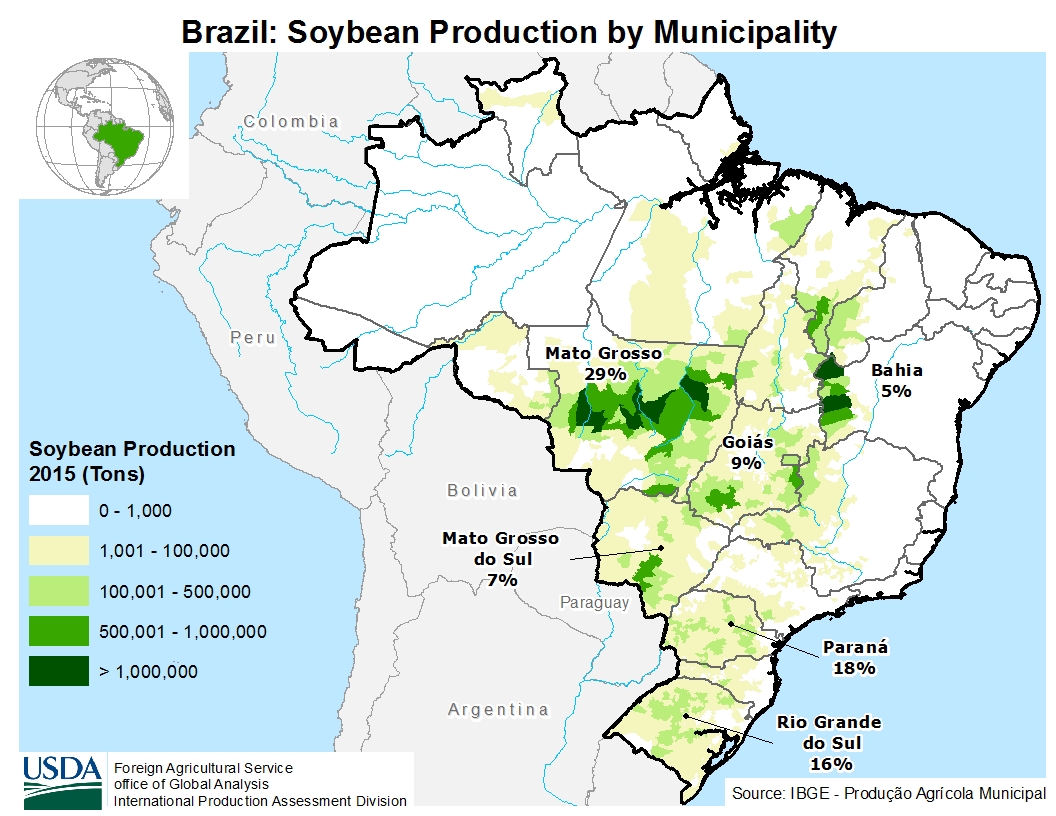
Awesome information as usual.
Thanks, Jim!
Always great for you to bring up market topics that interest most of us to get the ball rolling!